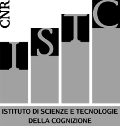We present an ''ab initio'' method that tries to determine the tertiary structure of unknown proteins by modelling the folding process without using potentials extracted from known protein structures. We have been able to obtain appropriate matrices of folding potentials, i.e. 'forces' able to drive the folding process to produce correct tertiary structures, using a genetic algorithm. Some initial simulations that try to simulate the folding process of a fragment of the crambin that results in an alpha-helix, have yielded good results. We discuss some general implications of an Artificial Life approach to protein folding which makes an attempt at simulating the actual folding process rather than just trying to predict its final result.
Tipo Pubblicazione:
Articolo
Publisher:
Springer, Berlin , Germania
Source:
Lecture notes in computer science 929 (1995): 862–875.
info:cnr-pdr/source/autori:Calabretta, R; Nolfi, S; Parisi, D/titolo:An artificial life model for predicting the tertiary structure of unknown proteins that emulates the folding process/doi:/rivista:Lecture notes in computer science/anno:1995/pagina_da:86
Date:
1995
Resource Identifier:
http://www.cnr.it/prodotto/i/301300
Language:
Eng

